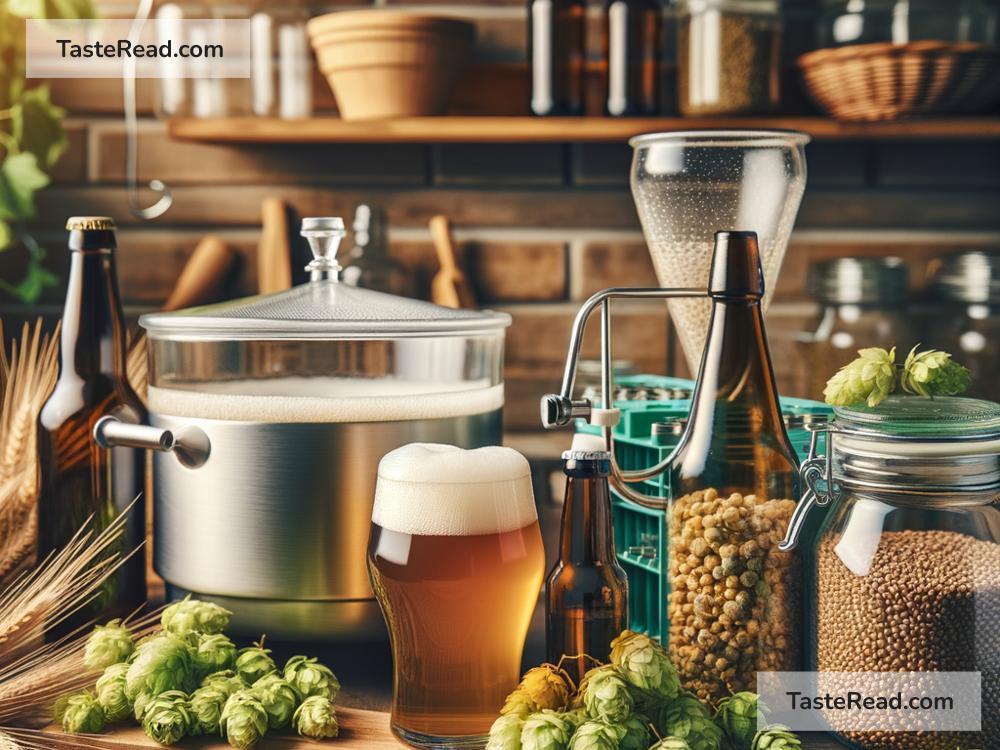How to Brew Craft Beer at Home: A Beginner’s Guide
Are you a fan of craft beer and curious about how it’s made? Brewing beer at home is an exciting and rewarding hobby that allows you to unleash your creativity while enjoying fresh, flavorful beer made by your own hands. The process may seem intimidating at first, but with patience and basic knowledge, you can become a homebrewer in no time! This simple guide will walk you through the basics of brewing craft beer at home.
What is Craft Beer?
Craft beer is typically made by small, independent brewers who focus on high-quality ingredients, interesting flavors, and unique brewing techniques. Brewing your own craft beer at home gives you complete control over the taste, style, and ingredients. Whether you prefer hoppy IPAs, malty stouts, or fruity wheat beers, brewing at home lets you experiment and create beers you’ll truly love.
What You’ll Need to Get Started
Before jumping into brewing, you’ll need a few essential tools and ingredients. Don’t worry if this sounds overwhelming—many homebrewing starter kits come with everything you need to make your first batch.
Equipment:
- Brew Kettle: A large pot to boil your ingredients. You’ll need at least five gallons capacity.
- Fermenter: This is where the magic happens! A bucket or glass carboy with an airlock allows your beer to ferment without contamination.
- Sanitizer: Keeping everything clean is crucial in brewing. Use sanitizer to prevent bacteria from ruining your beer.
- Hydrometer: This measures the sugar content of your beer and helps track fermentation progress.
- Funnel and Strainer: Useful for transferring liquid and separating ingredients.
- Bottling Equipment: Bottles, caps, and a capper are needed to store your finished beer.
Ingredients:
- Malted Grains: Barley is the most common malt, but you can also use other grains for different flavors.
- Hops: These are flowers that add bitterness, aroma, and flavor to your beer.
- Yeast: Yeast ferments the sugars in the malt to create alcohol and carbonation.
- Water: Clean, filtered water is essential because it’s the base of your beer.
Step-by-Step Guide to Brewing Craft Beer
Now let’s dive into the brewing process. Below are the basic steps to make a five-gallon batch of craft beer.
1. Preparation
Before doing anything, sanitize your equipment thoroughly. Contamination can ruin your beer, so take extra care with cleanliness.
2. Steeping the Grains
Heat about 2-3 gallons of water in your brew kettle. As it warms (not boiling), add your malted grains to a steeping bag (like a tea bag) and let them soak. This step extracts the sugars and flavors from the grains that will form the backbone of your beer. After 20-30 minutes, remove the grains and discard them.
3. Boiling the Wort (Beer Base)
Your liquid is now called wort—the base of beer. Bring the wort to a gentle boil and add hops according to your recipe. Hops are usually added in stages to balance bitterness and aroma.
The boiling process usually lasts 60 minutes. Stir occasionally and follow the timing guidelines in your recipe for when to add the hops.
4. Cooling the Wort
Once boiling is complete, you need to quickly cool the wort to around 70°F (21°C) to prepare it for fermentation. You can use an ice bath or a wort chiller to speed up cooling. This step is important because yeast won’t work properly if the liquid is too hot.
5. Fermentation
Pour the cooled wort into your fermenter and add yeast. The yeast begins to eat the sugars in the wort, producing alcohol and carbonation. Seal the fermenter with an airlock to allow gases to escape while keeping contaminants out.
Place the fermenter in a cool, dark place. Fermentation usually lasts 1-2 weeks, but some recipes require longer. Use a hydrometer to check if fermentation is complete by measuring if the sugar levels have stabilized.
6. Bottling Your Beer
Once fermentation is done, it’s time to bottle your beer. Before bottling, you’ll add a small amount of priming sugar to create carbonation. Using a funnel and strainer, transfer your beer to bottles, then seal them with caps.
Let your bottled beer sit at room temperature for 1-2 weeks to carbonate. After that, chill it and enjoy!
Tips for Success
- Start Simple: Begin with an easy recipe like a pale ale or amber ale before experimenting with complex flavors.
- Take Notes: Write down what you do during brewing. This helps you improve your recipes over time.
- Be Patient: Brewing is a slow process, but the wait is worth it!
Final Thoughts
Brewing craft beer at home is like cooking but with science! While it takes practice to perfect your recipes, the process is enjoyable and rewarding. Sharing your homemade beer with friends and family makes for great conversations and proud moments.
So, gather your ingredients, sanitize your equipment, and get ready to brew something amazing. Who knows—you might even discover a hidden talent for creating delicious craft beer!
Cheers to your homebrewing adventure! 🍻


